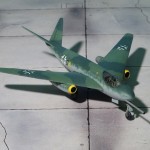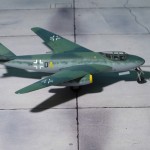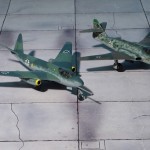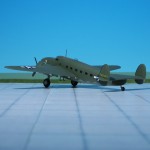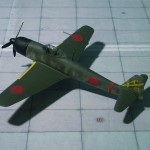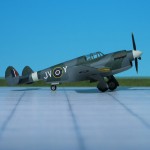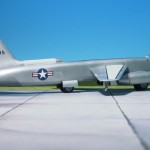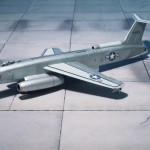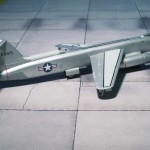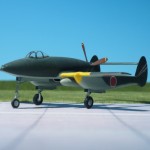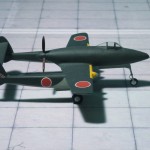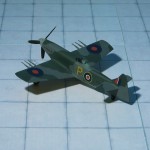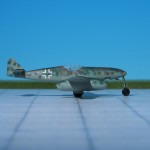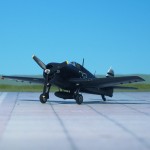TYPE: Heavy fighter, destroyer. Project.
ACCOMODATION: Pilot and Observer
POWER PLANT: Two Heinkel-Hirth HeS 011 turbojet engines, rated at 1,300 kp each
PERFORMANCE: 558 mph
COMMENT: Early in 1944, Messerschmitt undertook various design studies as part of the P.1101 project series. These designs had high speeds as their underlying concept and included aircraft with swing wings that could reach up to a 60 degree sweep back. The most famous of these projects and the one that almost reached flight testing was the Messerschmitt Me P.1101 V1. Among the Messerschmitt project studies was the Me P.1101/92 heavy fighter and destroyer, which was designed to carry a huge 75mm (3 inch) cannon as its main armament. The Me P.1101/92 had a mid-fuselage mounted wing swept back at 40 degrees. Slung beneath each wing was a single Heinkel-Hirth HeS 011 turbojet engine, each developing 1300 kp of thrust. A V tail was mounted in the rear, and a tricycle landing gear arrangement was chosen. The two man crew sat staggered side-by-side. Armament consisted of the single large BK 7.5 cm cannon in the nose, offset to the right side of the aircraft. As a result of production and delivery problems of the engine manufacturer and the imminent collapse of the “Third Reich”, all further development was stopped (Ref.: 16).










